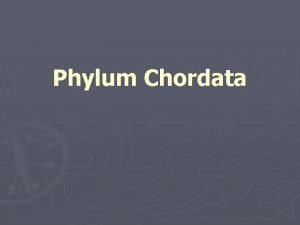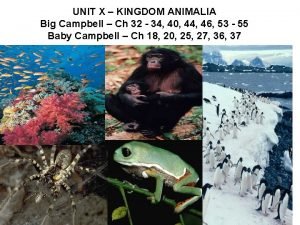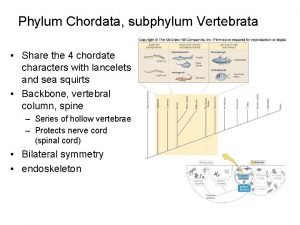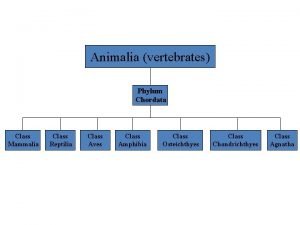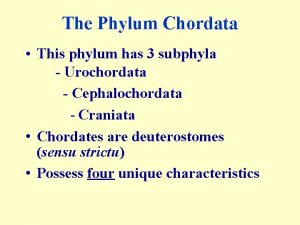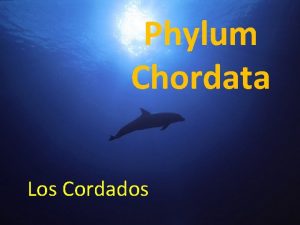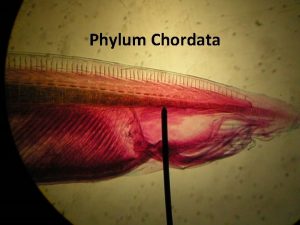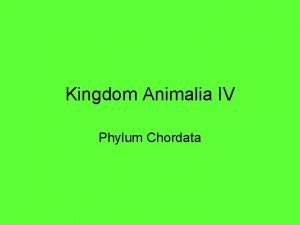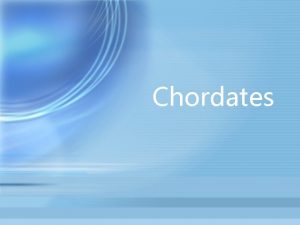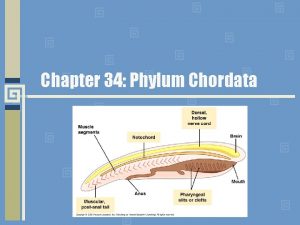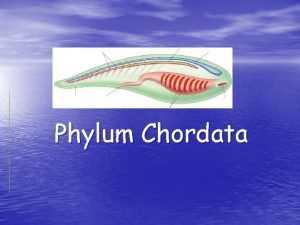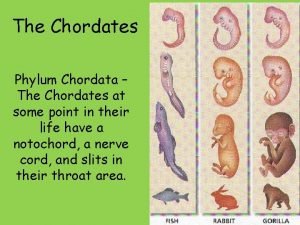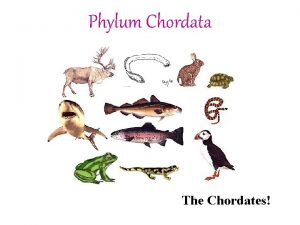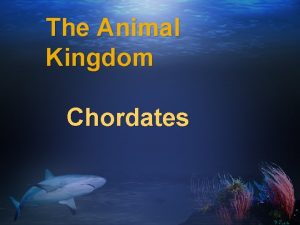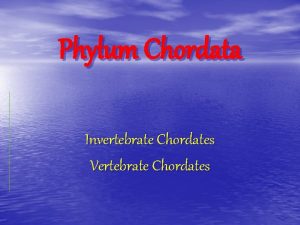Chordates Phylum Chordata Chordate A chordate is an











- Slides: 11

Chordates Phylum Chordata

Chordate • A chordate is an animal that has, for at least some stage of its life, a dorsal, hollow nerve cord; a notochord; pharyngeal pouches; and a tail that extends beyond the anus. Muscle segments Tail Anus Notochord Hollow nerve cord Mouth Pharyngeal pouches

Phylum Chordata – 1) a nerve cord • Develops into the spinal cord – 2) a notochord • A hard, stiff rod located under the nerve cord that provides support – 3) pharyngeal slits • Can develop into gills – 4) a post-anal tail

Chordates • About 96 percent of all chordates species are vertebrates • Most vertebrates have a vertebral column, or backbone • In vertebrates, the dorsal, hollow nerve cord is called the spinal cord

Fish • Aquatic vertebrates that have paired fins, scales, and gills – Found living in aquatic environments all over the world

Respiration • Fishes use their gills to exchange gases by pulling oxygen-rich water in through their mouths, pumping it over their gill filaments, and pushing oxygenpoor water out through openings in the sides of the pharynx Gills

Circulation • Have a closed circulatory system with a heart, blood vessels, and blood • A fish heart has two chambers – Atrium, and ventricle • In fish, the heart pumps blood first to the gills where the gas exchange takes places, and then the blood continues to the rest of the body.

Excretion • Like many other aquatic animals, most fish rid themselves of nitrogenous wastes in the form of ammonia • Some waste diffuse through the gills while others remove waste using the kidneys • Kidneys are excretory organs that filter wastes from the blood • Some fish are able to move from fresh to salt water by adjusting their kidney functions

Nervous • Have a well developed nervous system organized around a brain, which has several specialized parts and functions • Most fish have highly developed sense organs including a sensitive receptor known as the lateral line system • this allows the fish to sense the motion of other fish or prey swimming nearby by detecting movement in the water

Movement • Fish move through their environment using pairs of fins on either side of the fish as well as powerful tail • Many bony fishes have an internal, gas-filled organ called a swim bladder that adjusts their buoyancy.

Examples • Jawless fish (class Agnatha) – They lack vertebrae, and keep their notochords as adults. • Cartilaginous fish (class Chorndrichthyes) – The skeletons of these fishes are built entirely of cartilage. • Bony fish (class Osteichthyes) – Their skeletons are made of bone.

